Artefacts associated with submerged sites experience vastly different environmental and chemical effects than their terrestrial counterparts. Submerged sites often contain artefacts that terrestrial sites rarely exhibit, making the protection of these artefacts for future generations vital. Maritime archaeologists often have different approaches and methods of conserving previously submerged artefacts. For example, artefacts or materials that have been located in a sodium chloride solution (salt water) for extended periods are often well preserved but also friable in nature while artefacts recovered from anaerobic marine environments are also in better condition than those recovered from aerobic environments.
In the vast majority of cases, artefacts and materials that have survived have done so by reaching a chemical and physical equilibrium with their environment. If researchers do not conserve these artefacts properly and in a timely manner after their recovery, they are likely to deteriorate at an extremely rapid rate (Hamilton, 1997:4). Artefacts that are allowed to dry without conservation treatment produce sodium chloride crystals, which, in some cases, cause the artefacts to break and splinter, thereby destroying them. It is also important to note that organic and inorganic materials react differently to salt water (Hamilton, 1997:4). This blog will identify and outline some basic conservation techniques used to conserve both organic and inorganic artefacts, focusing primarily on chemical conservation.
Wood
Successful conservation of wood depends upon knowledge of wood structures and types. Two broad categories exist: hardwood and softwood. Defining these types of wood is beyond the scope of this blog, but oaks and birch are examples of hardwoods, while pine is a typical species of softwood. Wooden artefacts located on submerged sites for long periods lose much of their cellulosic components, making them more permeable (Hamilton 1997:32). This loss of structural cellulose means that while the wood is water logged, it will maintain its shape. However, if the artefact is exposed to air, and the water within evaporates, the surface tension holding it together will break, causing considerable structural shrinkage and distortion (Hamilton 1997:33). Two methods of conserving waterlogged wood are discussed below.
Polyethylene Glycol (PEG) Method
This was the first reliable method of treating waterlogged wood and is simple to carry out (Hamilton 1997:33). PEG variants have similar physical properties to wax but are different in that they are freely soluble in alcohol and water. This method is only appropriate for small objects. PEG is also corrosive to metals (primarily iron), so it is necessary to ensure that the conserved wood is not in close proximity to metal after conservation (Hamilton 1997:35).
Figure 1. The various stages of the PEG conservation process (Image created by author)
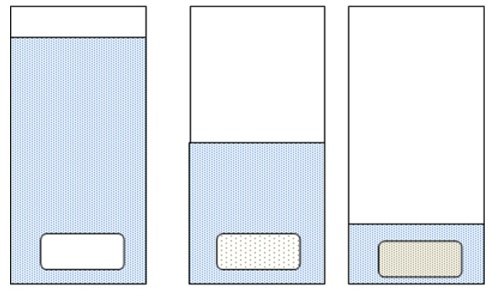
Figure2. The third stage of the PEG conservation method. The first beaker is the wood in the PEG solution. The second beaker identifies the increase in solution temperature as well as the percentage of PEG penetration of the wood. The third beaker, at 60°C, shows full penetration of the PEG solution in the wood (Image created by author)
Acetone-Rosin Method
This method is one of the more expensive ways to treat wood, and involves replacing the water in wood with natural rosin (usually pine) called colophony. Acetone-Rosin conserves hardwoods that PEG method cannot penetrate (McKerrell, Roger and Varsanyi 1972). It is generally considered the wood treatment of choice as the finished product is light, dry, strong, can be easily glued and repaired, and does not negatively react with metals (McKerrell, Roger and Varsanyi 1972).

| Figure 3. Recommended procedure for the Acetone-Rosin method of wood conservation (Image created by author) |
Bone, Ivory, Teeth, and Antler
Bone, ivory, teeth and antler are comparable in that they are made of an inorganic lattice composed of calcium phosphate, carbonates and fluorides, and an organic ossein. However, their precise compositional percentages differ significantly depending on several factors, including utility, species, and geographical location (Lafontanine and Wood 1982). Bone, ivory, teeth and antler are warped by heat and moisture and decompose when exposed to water. Ossein is decomposed by hydrolysis and acids disintegrate its inorganic framework (Hamilton 1997:22). When waterlogged, these artefacts can be reduced to a sponge-like material while in arid environments become dry, brittle, and fragmented.

Figure 4. The inorganic lattice of bone and ivory, and organic ossein that forms the collagen of bone (Smithsonian Institution 2013)
In order to remove soluble salts from bone, ivory, teeth and antler, rinse these objects in successive baths of water (a percentage fresh and a percentage salt) until the mixture is 100% fresh. Upon completion of this phase, begin the process anew using fresh and distilled water (Lafontanine and Wood 1982; Hamilton 1997:22-4). The following image identifies further steps in conservation.
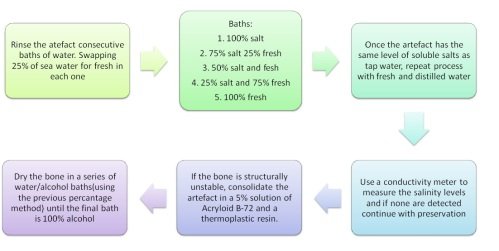
Figure 5. Stages of bone, ivory, teeth and antler conservation. (Image created by author)
Leather
Before conservation, it is necessary to remove all soluble salts; this procedure is the same as the one used for bone, ivory, teeth and antler (Hamilton 1997:43). Conservation methods for leather include the PEG method (described above) as well as freeze-drying. The freeze-drying technique follows the PEG method but includes the use of a fungicide in the PEG solution, after which the artefact is immersed in acetone and frozen carbon dioxide (CO2). The artefact is then placed in a freeze drying chamber for 2-4 weeks (Hamilton 1997:47).
Glass
Glass consists of 70-74% silica, 16-22% potash or soda ash and 5-10% flux (lime) (Hamilton 1997:29; Brill 1962). The sodium (Na) and potassium (K) carbonates in the glass can leach out, especially in salt water, which leaves only a porous silica (SiO2) network. This typically creates a frosty appearance. Alternatively, decomposed glass appears laminated with iridescent layers. Conservators have different opinions about how to effectively treat glass, and have proposed methods ranging from storing or exhibiting the glass in low humidity to applying resins to seal it. Newton and Davison (1989), and Plenderleith and Werner (1971) discuss various methods of conservation for glass. The latter (Plenderleith and Werner 1971:345) present a treatment of unstable glass shown below (Figure 8).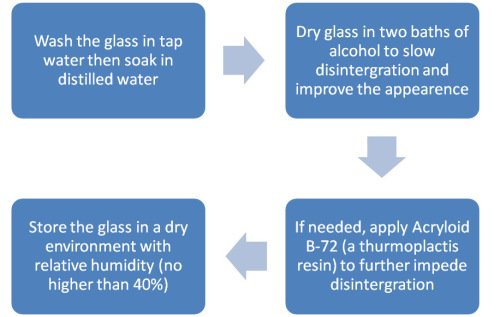
Figure 6. Treatment of unstable glass presented by Plenderleith and Werner in their 1971 publication The conservation of antiquities and works or art: treatment, repair and restoration (Image created by author)
Metals
Metals are usually defined as cathodic (noble) or anodic (less noble). A complete overview of conservation methods for each type of metal is beyond the scope of this blog; consequently, only anodic metal iron will be reviewed.
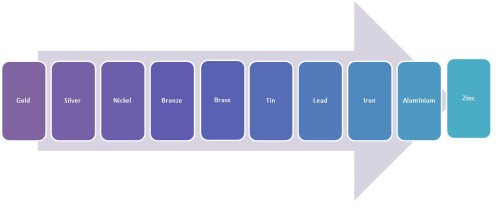
Figure 7. Galvanic Corrosion Chart ranging from gold (a cathodic metal, which is more protected) to zinc (an anodic, which is less protected and more subject to corrosion) (Image created by author)
Iron usually presents the most puzzling issues with conservators due to the variety of conditions and environments in which iron corrodes. Iron corrodes five times faster in salt water than it does in soil, and ten times faster than in air, and this corrosion is normally electrochemical (Hamilton 1997:54-60). The process of conservation is determined by a preliminary evaluation of the condition of the object. Treatments for iron include electrochemical cleaning (including galvanic cleaning and electrolytic reduction), alkaline sulphite, and chemical cleaning including tannic acid, annealing, and water diffusion in alkaline solutions (Argo 1981).
Alkaline Sulphite Treatment
This treatment can be used on both cast and wrought iron, and is most effective on artefacts that are moderately or highly corroded; however, the iron object must have a metallic core or treatment will be unsuccessful (Bryce 1979:21).
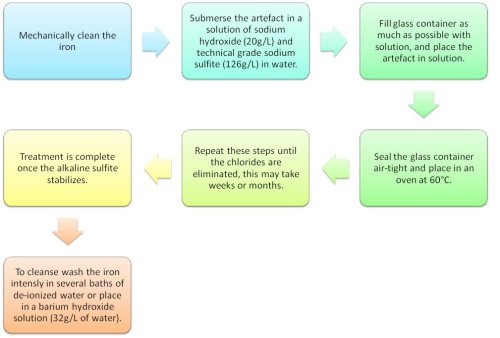
Figure 8. The stages of Alkaline Sulphite Treatment (Image created by author)
Conserving artefacts recovered from submerged sites is a lenghtly and sometimes costly process. It is, however, a very important aspect of archaeological investigation. Each artefact, depending on its chemical composition and level of decomposition, has numerous methods of conservation. The aforementioned methods and techniques are by no means an extensive or complete list of every method used for every artefact; they merely act as a starting point for those looking to conserve items from the archaeological record.
References
Argo, J.
1981 On the Nature of ‘Ferrous’ Corrosion Products of Marine Iron. Studies in Conservation, 26(1):42-44.
Brill, R.H.
1962 A Note of the Scientist’s Definition of Glass. Journal of Glass Studies, 4:127-138.
Bryce, T.
1979 Alkaline Sulphite Treatment of Iron at the National Museum of Antiquities of Scotland. The Conservation and Restoration of Metals. Scottish Society for the Conservation & Restoration of Metals, Proceedings of the Edinburgh Symposium 1979: 20-23.
Hamilton, D.L.
1997 Basic Methods of Conserving Underwater Archaeological Material Culture. U.S. Department of Defence, Washington.
Lafontaine, R.H. And P.A. Wood
1982 The Stabilization of Ivory Against Relative Humidity Fluctuations. Studies in Conservation, 27(3):109-117.
McKerrell, H., Roger, E., and A. Varsanyi
1972 The Acetone/Rosin Method for the Conservation of Waterlogged Wood. Studies in Conservation, 17:111-125.
Newton, R.G. and S. Davison
1989 The Conservation of Glass. Butterworth-Heinemann Limited, London.
Plenderleith, H.J. and A. E.A. Werner
1971 The Conservation of Antiquities and Works of Art: Treatment, Repair, and Restoration. Oxford University Press, London.
Smithsonian Institution
2013 An Inside Look at Bone. Electronic document, http://anthropology.si.edu/writteninbone/inside_look.html, accessed September 7, 2013.
Further Readings
Angelucci, S., Florentino, P., Kosinkova, J., and M. Marabelli
1978 Pitting Corrosion in Copper and Copper Alloys: Comparative Treatments Tests. Studies in Conservation 24:147-156.
Dowman, E.A.
1970 Conservation in Field Archaeology. Methuen and Co., London.
Koob, S.P.
1986 The use of Paraloid B-72 as an Adhesive: Its Application for Archaeological Ceramics and Other Materials. Studies in Conservation, 31:7-14.
Kotlik, P., Justa, P., and J. Zelinger
1983 The Application of Epoxy Resins for the Consolidation of Porous Stone. Studies in Conservation, 28:75-79.
Wanhill, R.
2013 Stress Corrosion Cracking in Ancient Silver. Studies in Conservation, 58(1): 41-49.
Watson, J.
1987 The Application of Freeze-Drying on British Hardwoods from Archaeological Excavations. In Gratten, D.W. (ed), Proceedings of the ICOM Waterlogged Wood Working Group Conference, pp 237-242. ICOM, Committee for Conservation, Waterlogged Wood Working Group, Ottawa.


Reblogged this on petastraiton.
I found this site very easy to comprehend, it is well written and in layman’s terms. Well done !!!